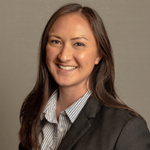
Pathward Financial has been providing banking as a service (or BaaS) and partner payment services for two decades — practically a lifetime when it comes to the nascent, innovative and complex business line. Its BaaS business line — newly renamed “Partner Solutions” — has fueled the bank’s earnings, including a return on average assets of 2.28% and return on average equity of 22.62% in the third quarter.
Interest from other banks in banking as a service has ebbed and flowed, from a relative explosion to a retrenching in recent years as financial regulators identified several deficiencies at newer entrants, demanding investments in compliance and controls that match the higher volume of customer accounts and transactions.
The Sioux Falls, South Dakota-based bank is seeing all of this and thinking about what’s next, says President Anthony Sharett. The $7.5 billion bank is exploring how it can keep leveraging technology to further growth and promote financial inclusion, especially given the future potential of businesses like embedded banking and payments. Bank Director’s Kiah Lau Haslett recently spoke with Sharett to reflect on the current state of banking as a service, the future and how the bank approaches data, technology and talent. This is an edited, shortened version of that conversation.
BD: Why did Pathward rename its banking as a service business line to Partner Solutions?
Sharett: We recently marked our 20th anniversary in the payments industry and have been pioneers in the space. We decided to rename the business line to indicate our cocreation and innovation alongside our fintechs partners. In the past, partners would bring us a solution, capability or product they wanted to launch, and then we found a way to onboard that and launch that
program. Today, Pathward is part of that product development process through our technology and business development teams. Cocreating and innovating helps us understand customer needs and build sustainable, financially inclusive products.
BD: How does a bank with extensive fintech partnerships get good at risk and compliance, especially if they’re coming from a community bank orientation and are moving more into the partner banking space?
Sharett: You can’t build a risk and compliance framework in the partner solutions or BaaS space overnight. It’s taken years for us to build this capability. Everyone is responsible for risk and compliance; it’s not just up to the risk and compliance team to manage our framework. Our business leaders, our technology leaders, our finance and accounting leaders — we are all part of the culture of a robust risk and compliance framework. I think what surprises many new BaaS entrants is how much time and investment it takes to be mature in this space.
BD: Outside of risk and compliance, is there anything else you think is essential for success in partner banking?
Sharett: Skating where the hockey puck is going. We’ve seen a migration in the traditional payments space, from using cards as the catalyst for the go-to-market strategy to partners wanting a card and a payments product or a lending product so they can provide a holistic solution for customers. We want to enable and empower that through our platform.
BD: I’ve written recently about how technology at a bank is not just IT’s job and that, increasingly, product and business line people need to have a working knowledge of the tech that impacts their job or their clients. Would you agree with that, and what does that look like at Pathward?
Sharett: I would agree with that. For a few years now, Pathward has had a business council comprised of senior leaders across the organization: our technology, product, finance and accounting, legal, compliance, risk teams and our business leaders. They meet regularly to discuss issues around technology, data and how we can make our platform configurable. Our business council is in constant communication about the technology we need to support our partners. I don’t think anyone’s sure about where the embedded finance industry is going, but we want to be ready for it.
BD: How does Pathward use data to inform product development?
Sharett: Data quality and integrity are vital to leverage for insights. What does data teach us about customer and consumer behavior and what our partners may need? Data can be used to enhance our risk and compliance framework. The holy grail is using quality data and the insights that come from it to drive strategic decisions.
The interplay between that and our product development is important. We are filling a gap by providing financial access to those who need it, both consumers and small and midsized businesses. Data is critical and instrumental in helping us find those gaps and provide that financial access.
BD: How does Pathward think about the technology that grows the bank compared to the tech that runs the bank, given its experience in partner banking?
Sharett: We’ve been intentional about leveraging technology to grow the bank. From an organizational design perspective, we designed our bank so that our technology and product groups are part of the same team and roll up to our chief information and product officer. That has been a catalyst for initiatives that grow Pathward.
All companies have a mission or a purpose, and most have values. At Pathward, we also have operating norms we created because we need a connected, integrated enterprise approach to meet our strategic goals. “Legos, not unicorns” is one of those operating norms. We also want to ensure we have radical collaboration — that’s another operating norm we use. When you have a connected enterprise approach, the only way it’s going to work is by ensuring we use a common language and have alignment around the norms that will be catalysts for us in the future.


